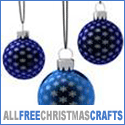(A special household tip.)
1 box (1lb.) Baking Soda
1 to 2 tablespoons baby powder
Carefully remove top of box from baking soda.
Add 1 to 2 tablespoons of your favorite baby powder. Mix thoroughly with a small spoon or teaspoon.
Sprinkle evenly over carpet. Work the powder mixture into the carpet with a broom. Let stand 30 minutes.
Vaccum carpet. It leaves the room smelling fresh and it is economical, too.
Kay's Tip: My husband uses this often. He made up this recipe.
Welcome to Kay's Recipes n Stuff!
You are invited to share the joy of cooking. This culinary blog consists not only of my favorite family recipes but also provides delicious insight into my vast collection of hundreds of recipes. I have included some culinary and household hints that I have found to be useful in my own home. It is my sincere hope that you will find this blog to be an invaluable resource. Enjoy your visit and come back often.
Kay's Tip: Kay's Recipes N Stuff is best viewed in Google Chrome.
Showing posts with label Special Household Tips. Show all posts
Showing posts with label Special Household Tips. Show all posts
When Using Bleach, Follow These Guidelines
(A special household tip.)
Before you bleach, read the garment's care label. If it says "no bleach," don't use any kind of bleach. Chlorine bleach is usually safe on cottons, linens, and some colorfast fabrics.
Don't use chlorine bleach on wool, silk, mohair, leather (e.g., buttons, Spandex, or noncolorfast fabrics or dyes). If you're unsure about the safety of a bleach for a garment, first do a safety test on an inside seam as recommended on the bleach's label.
Never use chlorine bleach with hand dishwashing liquids, ammonia, or toilet cleaners. The combination can produce irritating fumes.
Chlorine bleach must first be diluted as directed on the product's label. It should then be added 5 to 6 minutes after the wash cycle has started.
Oxygen (nonchlorine) bleach should be added with the laundry detergent to the wash water before the laundry is added. It is safe on washable fabrics. It works more effectively at higher wash temperatures than at cooler temperatures.
Note: Chlorine and oxygen bleaches use different active ingredients that decolorize and solubilize stains so they can be removed with the help of a detergent. Liquid chlorine bleaches all have about the same amount of active ingredient, sodium hypochlorite, and there is little difference from one brand to another. The active ingredient in liquid oxygen bleaches is hydrogen peroxide. In powder oxygen bleaches it is sodium percarbonate or sodium perborate tetrahydrate. Oxygen bleaches usually contain other ingredients as well to help in stain removal.
Chlorine bleaches have always been far better than oxygen bleaches at whitening clothes. Oxygen bleaches can only maintain whiteness, not restore it.
Before you bleach, read the garment's care label. If it says "no bleach," don't use any kind of bleach. Chlorine bleach is usually safe on cottons, linens, and some colorfast fabrics.
Don't use chlorine bleach on wool, silk, mohair, leather (e.g., buttons, Spandex, or noncolorfast fabrics or dyes). If you're unsure about the safety of a bleach for a garment, first do a safety test on an inside seam as recommended on the bleach's label.
Never use chlorine bleach with hand dishwashing liquids, ammonia, or toilet cleaners. The combination can produce irritating fumes.
Chlorine bleach must first be diluted as directed on the product's label. It should then be added 5 to 6 minutes after the wash cycle has started.
Oxygen (nonchlorine) bleach should be added with the laundry detergent to the wash water before the laundry is added. It is safe on washable fabrics. It works more effectively at higher wash temperatures than at cooler temperatures.
Note: Chlorine and oxygen bleaches use different active ingredients that decolorize and solubilize stains so they can be removed with the help of a detergent. Liquid chlorine bleaches all have about the same amount of active ingredient, sodium hypochlorite, and there is little difference from one brand to another. The active ingredient in liquid oxygen bleaches is hydrogen peroxide. In powder oxygen bleaches it is sodium percarbonate or sodium perborate tetrahydrate. Oxygen bleaches usually contain other ingredients as well to help in stain removal.
Chlorine bleaches have always been far better than oxygen bleaches at whitening clothes. Oxygen bleaches can only maintain whiteness, not restore it.
Cleaning Wood Furniture
(A special household tip.)
This is a home brew recipe that does a creditable cleaning job on wood furniture. 1/2 teaspoon light olive oil added to 1/4 cup white vinegar. This has been found to be as effective as any store product. As always, a wood furniture cleaner should first be tested on an inconspicuous area before attempting to use any cleaning formula.
This is a home brew recipe that does a creditable cleaning job on wood furniture. 1/2 teaspoon light olive oil added to 1/4 cup white vinegar. This has been found to be as effective as any store product. As always, a wood furniture cleaner should first be tested on an inconspicuous area before attempting to use any cleaning formula.
Removing Old Floor Wax
(A special household tip.)
The typical recipe for removing old floor wax is 1/2 cup of powdered floor cleaner and 2 cups of ammonia in 1 gallon of cool water, some fine steel wool, and a lot of elbow grease. There are commercial wax removers on the market. Some are recommended on labels of their brand-mate floor polishes.
The typical recipe for removing old floor wax is 1/2 cup of powdered floor cleaner and 2 cups of ammonia in 1 gallon of cool water, some fine steel wool, and a lot of elbow grease. There are commercial wax removers on the market. Some are recommended on labels of their brand-mate floor polishes.
Hand Dishwashing Liquids
(A special household tip.)
Hand dishwashing liquids are very versatile. They can be used to clean dirty hands, they can be used to hand launder delicate washable clothing, and they can be used for many other cleaning purposes. CAUTION: Do not use a hand dishwashing liquid in an automatic dishwasher--it will generate too much suds.
Hand dishwashing liquids are very versatile. They can be used to clean dirty hands, they can be used to hand launder delicate washable clothing, and they can be used for many other cleaning purposes. CAUTION: Do not use a hand dishwashing liquid in an automatic dishwasher--it will generate too much suds.
Subscribe to:
Posts (Atom)
Cooking Calculator
Use this handy calculator to convert international measures used in recipes. Simply enter the required value into the input field at the top and then press the appropriate button to perform the calculation.
 |
Go to Top of Page |
Roasting Chart
Roasting
Temperatures |
|
| Temperatures are most accurately determined by using an instant thermometer inserted in the meat where indicated and withdrawn to take a reading. | |
|
BEEF, in the center not touching the bone
130ºF (54ºC) rare
160ºF (71ºC) medium
180ºF (82ºC) well done
|
LAMB, in the center not touching the bone
140ºF (60ºC) pink
145ºF (63ºC) medium-rare
165ºF (74ºC) well done
|
POULTRY,chicken, in breast, 170ºF (77ºC) |
PORK AND VEAL, in the center not touching the bone
160ºF (71ºC)
|
 |
Go to Top of Page |
Nutrition Calculator
Make smart choices about the foods you eat. Quickly
lookup nutritional information including calories, fat,
carbs, sodium, and more on thousands of foods. I found this neat tool at Wootus.com. Use their
new nutrition calculator tool to add up your calories!
Yon can browse by food categories, food brands, and restaurants.
 |
Go to Top of Page |























 National Popcorn Popping Month
National Popcorn Popping Month


















